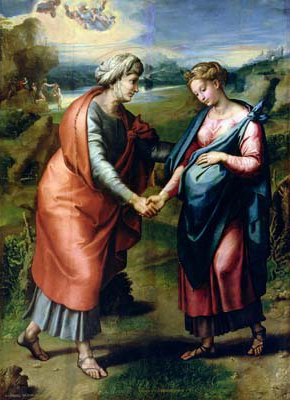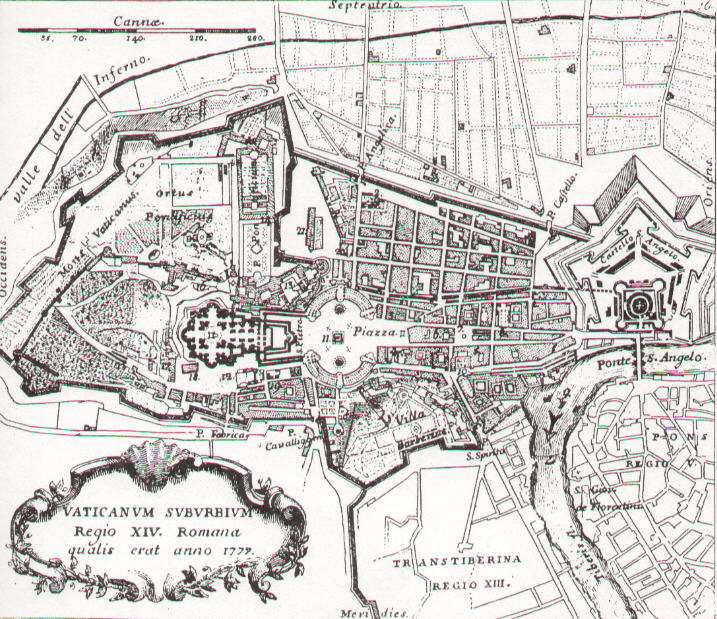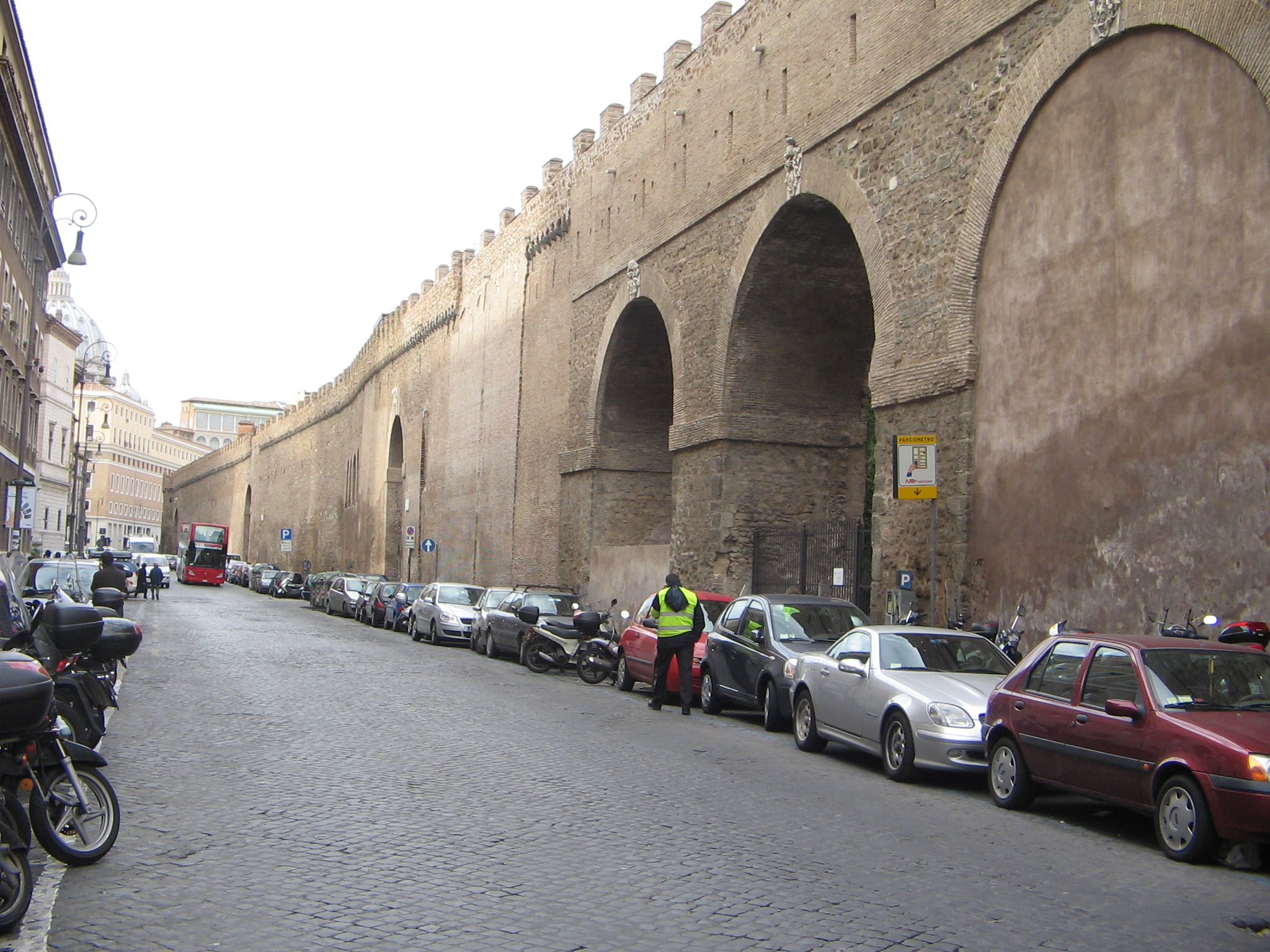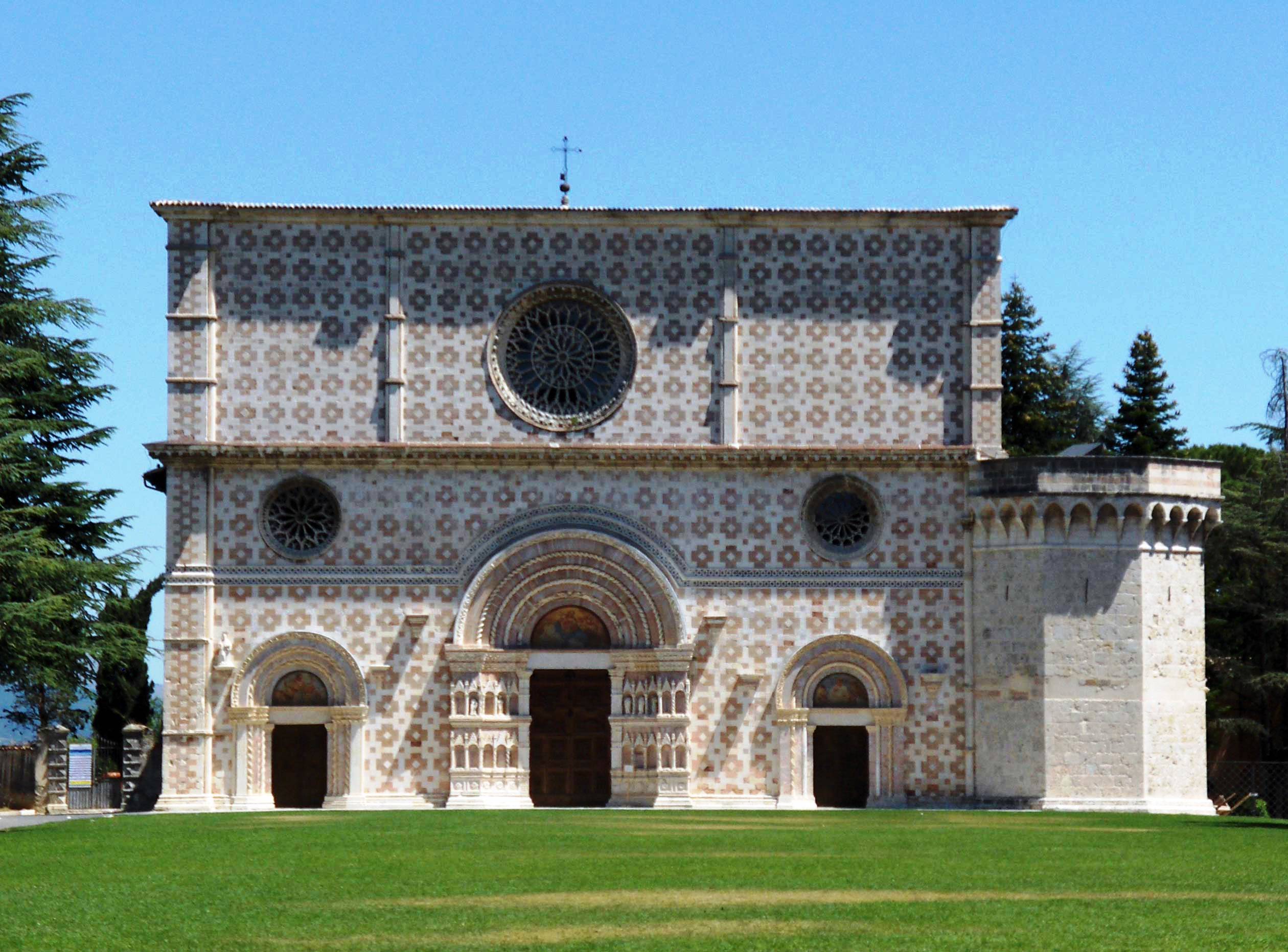|
Giovanbattista Branconio Dell'Aquila
Giovanbattista Branconio dell'Aquila (1473 – 1522) was a papal protonotary and chamberlain, as well as a friend of the artist Raphael (who painted ''Visitation (Raphael), The Visitation''; Raphael designed the palace of Palazzo Branconio dell'Aquila on Borgo Nuovo (Rome), via Alessandrina in the Borgo (rione of Rome), Borgo for him). Branconio, who was born in L'Aquila, was also the personal keeper of Hanno (elephant), Hanno, the white elephant brought to Rome in 1514. Raphael's Visitation Around 1517 Raphael painted a great Visitation (Raphael), Visitation at the request of Marino Branconio, father of Giovanni Battista. The Visitation enriched the Branconio Chapel inside the church of San Silvestro (L'Aquila), church of San Silvestro, near the family palazzo in L'Aquila, Aquila. Marino's wife was named Elisabetta, and the Visitation represents the Virgin Mary and Saint Elizabeth. In 1655 the canvas was forcefully removed by occupying Spanish troops and taken to El Escorial ... [...More Info...] [...Related Items...] OR: [Wikipedia] [Google] [Baidu] |
Portrait De L'artiste Avec Un Ami, By Raffaello Sanzio, From C2RMF Retouched
A portrait is a portrait painting, painting, portrait photography, photograph, sculpture, or other artistic representation of a person, in which the face is always predominant. In arts, a portrait may be represented as half body and even full body. If the subject in full body better represents personality and mood, this type of presentation may be chosen. The intent is to display the likeness, Personality type, personality, and even the mood of the person. For this reason, in photography a portrait is generally not a Snapshot (photography), snapshot, but a composed image of a person in a still position. A portrait often shows a person looking directly at the painter or photographer, to most successfully engage the subject with the viewer, but portrait may be represented as a profile (from aside) and 3/4. History Prehistorical portraiture Plastered human skulls were reconstructed human skulls that were made in the ancient Levant between 9000 and 6000 BC in the Pre-Pottery Ne ... [...More Info...] [...Related Items...] OR: [Wikipedia] [Google] [Baidu] |
Raphael
Raffaello Sanzio da Urbino (; March 28 or April 6, 1483April 6, 1520), now generally known in English as Raphael ( , ), was an Italian painter and architect of the High Renaissance. List of paintings by Raphael, His work is admired for its clarity of form, ease of composition, and visual achievement of the Platonism in the Renaissance, Neoplatonic ideal of human grandeur. Together with Leonardo da Vinci and Michelangelo, he forms the traditional trinity of great masters of that period. His father Giovanni Santi was court painter to the ruler of the small but highly cultured city of Urbino. He died when Raphael was eleven, and Raphael seems to have played a role in managing the family workshop from this point. He probably trained in the workshop of Pietro Perugino, and was described as a fully trained "master" by 1500. He worked in or for several cities in north Italy until in 1508 he moved to Rome at the invitation of Pope Julius II, to work on the Apostolic Palace at Vatican ... [...More Info...] [...Related Items...] OR: [Wikipedia] [Google] [Baidu] |
Visitation (Raphael)
The ''Visitation'' is a c. 1517 painting of the Visitation of the Virgin Mary to Saint Elizabeth by Raphael, in the Prado Museum since 1837. Commissioned by the Apostolic Protonotary Giovanni Branconio at his father Marino's request for their family chapel in the church of San Silvestro in L'Aquila (Marino's wife was called Elisabeth), it was plundered by the occupation troops of Philip IV of Spain in 1655 and placed at El Escorial. See also *List of paintings by Raphael Notes References * External linksPrado catalogue entry* 1517 paintings Paintings of the Madonna and Child by Raphael Paintings by Raphael in the Museo del Prado Raphael Raffaello Sanzio da Urbino (; March 28 or April 6, 1483April 6, 1520), now generally known in English as Raphael ( , ), was an Italian painter and architect of the High Renaissance. List of paintings by Raphael, His work is admired for its cl ... Pregnancy in art {{1510s-painting-stub ... [...More Info...] [...Related Items...] OR: [Wikipedia] [Google] [Baidu] |
Palazzo Branconio Dell'Aquila
The Palazzo Branconio dell'Aquila is a lost palace in the ''rione'' Borgo of Rome (west of Castel Sant'Angelo), designed by Raphael for Giovanbattista Branconio dell'Aquila, a papal advisor and goldsmith. It was designed by the Italian artist in his last years of life, around 1520. The palace lay along the Borgo Nuovo road, and was demolished around 1660 together with the adjoining block, named "Isola del Priorato" after the nearby Priory of the Knights of Rhodes, to open a square in front of Saint Peter's Square St. Peter's Square (, ) is a large plaza located directly in front of St. Peter's Basilica in Vatican City, the pope, papal enclave and exclave, enclave in Rome, directly west of the neighborhood (rione) of Borgo (rione of Rome), Borgo. Both t ... colonnade, the Piazza Rusticucci. See also * Palazzo Jacopo da Brescia Sources * External links *https://web.archive.org/web/20080706120332/http://rome.jc-r.net/palazzo-branconio-dell-aquila.htm Buildings a ... [...More Info...] [...Related Items...] OR: [Wikipedia] [Google] [Baidu] |
Borgo Nuovo (Rome)
Borgo Nuovo, originally known as via Alessandrina, also named via Recta or via Pontificum, was a road in the city of Rome, Italy, important for historical and architectural reasons. Built by Pope Alexander VI Borgia () for the holy year of 1500, the road became one of the main centers of the high Renaissance in Rome. Borgo Nuovo was demolished together with the surrounding quarter in 1936–37 due to the construction of Via della Conciliazione. Location Located in the Borgo ''rione'', the straight road stretched in E–W direction, between ''Piazza Pia'', which marks the entrance of the quarter near the right bank of the Tiber, and the north edge of ''Piazza Rusticucci'', which until its demolition was the vestibule of Saint Peter's Square. At about two thirds of its length, Borgo Nuovo crossed '' Piazza Scossacavalli'', the center of the Borgo. Together with the nearby road of Borgo Vecchio, of probable Roman origin, Borgo Nuovo delimited the so–called ''s ... [...More Info...] [...Related Items...] OR: [Wikipedia] [Google] [Baidu] |
Borgo (rione Of Rome)
Borgo (sometimes called also I Borghi) is the 14th (administrative district) of Rome, Italy. It is identified by the initials R. XIV and is included within Municipio I. Its coat of arms shows a lion (after the name " Leonine City", which was also given to the district), lying in front of three mounts and a star. These – together with a lion rampant – are also part of the coat of arms of Pope Sixtus V, who annexed Borgo as the 14th rione of Rome. History Roman Age: ''Ager Vaticanus'' During the Roman age, the Borgo district was part of the 14th Regio (Regio XIV Transtiberim) and was named '' Ager Vaticanus'', after the auguries (''vaticinii'') performed there by the Etruscan '' Augurs''. Since it lay outside the Pomerium (the religious city border inside which burial was forbidden) and was plagued by malaria, this territory was used as a burial place. Some tombs reached notable proportions, including the '' Terebinthus Neronis'', which was a round tomb surmounted by a ... [...More Info...] [...Related Items...] OR: [Wikipedia] [Google] [Baidu] |
L'Aquila
L'Aquila ( ; ; ) is a city and ''comune'' in central Italy. It is the capital city of the Province of L'Aquila and the Abruzzo region in Italy. , it has a population of 69,902. Laid out within medieval walls on a hill in the wide valley of the Aterno-Pescara, Aterno river, it is surrounded by the Apennine Mountains, with the Gran Sasso d'Italia to the north-east. L'Aquila sits on a hillside in the middle of a narrow valley; the tall snow-capped mountains of the Gran Sasso massif flank the town. A maze of narrow streets, lined with Baroque and Renaissance buildings and churches, open onto elegant piazzas. Home to the University of L'Aquila, it is a lively college town and, as such, has many cultural institutions: a Repertory, repertory theatre, a symphony orchestra, a fine art academy, a state conservatory and a film institute. There are several ski resorts in the surrounding province (Campo Imperatore, Ovindoli, Pescasseroli, Roccaraso, Scanno, Abruzzo, Scanno). Geography Close ... [...More Info...] [...Related Items...] OR: [Wikipedia] [Google] [Baidu] |
Hanno (elephant)
Hanno (; c. 1510 – 8 June 1516) was the pet white elephant given by King Manuel I of Portugal to Pope Leo X (born Giovanni de' Medici) at his coronation. He was named Annon and Hanno after the Malayalam word Aana ( ആന) meaning elephant. Hanno, an Asian elephant, came to Rome in 1514 with the Portuguese ambassador Tristão da Cunha and quickly became the Pope's favorite animal. Hanno died two years later from complications of a treatment for constipation with gold-enriched laxative. Background King Manuel had either received him as a gift from the Raja of Cochin, or had asked Afonso de Albuquerque, his viceroy in India, to purchase him. Hanno was said to be white in colour, and arrived by ship from Lisbon to Rome in 1514, aged about four years, and was kept initially in an enclosure in the Belvedere courtyard, then moved to a specially constructed building between St. Peter's Basilica and the Apostolic Palace, near the Borgo Sant'Angelo (a road in the rione of ... [...More Info...] [...Related Items...] OR: [Wikipedia] [Google] [Baidu] |
Church Of San Silvestro (L'Aquila)
The Basilica of Saint Sylvester the First, also known as (, ), is a Roman Catholic minor basilica and titular church in Rome dedicated to Pope Sylvester I (d. AD 335). It is located on the Piazza San Silvestro, at the corner of Via del Gambero and the Via della Mercede, and stands adjacent to the central Post Office. Built in the 8th century as a shrine for the relics of the saints and martyrs from the Catacombs, the church is the national church of Great Britain. The Latin words "in capite" refers to the canonical title of Pope Sylvester the First, to which ''in capite'' means ''in First, in Chief, or in Head''. The basilica is also famous for a relic, a fragment of a head purported to be that of John the Baptist, kept in a chapel to the left of the entrance. A second Roman church dedicated to Pope Sylvester I is San Silvestro al Quirinale. The current Cardinal-Priest is Louis-Marie Ling Mangkhanekhoun, Apostolic Vicar of Vientiane. History The original church was built w ... [...More Info...] [...Related Items...] OR: [Wikipedia] [Google] [Baidu] |
El Escorial
El Escorial, or the Royal Site of San Lorenzo de El Escorial (), or (), is a historical residence of the king of Spain located in the town of San Lorenzo de El Escorial, up the valley ( road distance) from the town of El Escorial, Madrid, El Escorial and about northwest of the Spanish capital Madrid. Built between 1563 and 1584 by order of King Philip II of Spain, Philip II (who reigned 1556–1598), El Escorial is the largest Renaissance architecture, Renaissance building in the world. It is one of the Spanish royal sites and functions as a monastery, basilica, royal palace, pantheon, library, museum, university, school, and hospital. El Escorial consists of two architectural complexes of great historical and cultural significance: the royal monastery itself and ''La Granjilla de La Fresneda de El Escorial, Madrid, La Granjilla de La Fresneda'', a royal hunting lodge and monastic retreat about away. These sites have a dual nature: during the 16th and 17th centuries, they we ... [...More Info...] [...Related Items...] OR: [Wikipedia] [Google] [Baidu] |
Museo Del Prado
The Museo del Prado ( ; ), officially known as Museo Nacional del Prado, is the main Spanish national art museum, located in central Madrid. It houses collections of Art of Europe, European art, dating from the 12th century to the early 20th century, based on the former Spanish royal collection, and the single best collection of Spanish art. Founded as a museum of paintings and sculpture in 1819, it also contains important collections of other types of works. The numerous works by Francisco Goya, the single most extensively represented artist, as well as by Hieronymus Bosch, El Greco, Peter Paul Rubens, Titian, and Diego Velázquez, are some of the highlights of the collection. Velázquez and his keen eye and sensibility were also responsible for bringing much of the museum's fine collection of Italian masters to Spain, now one of the largest outside of Italy. The collection currently comprises around 8,200 drawings, 7,600 paintings, 4,800 prints, and 1,000 sculptures, in additi ... [...More Info...] [...Related Items...] OR: [Wikipedia] [Google] [Baidu] |








